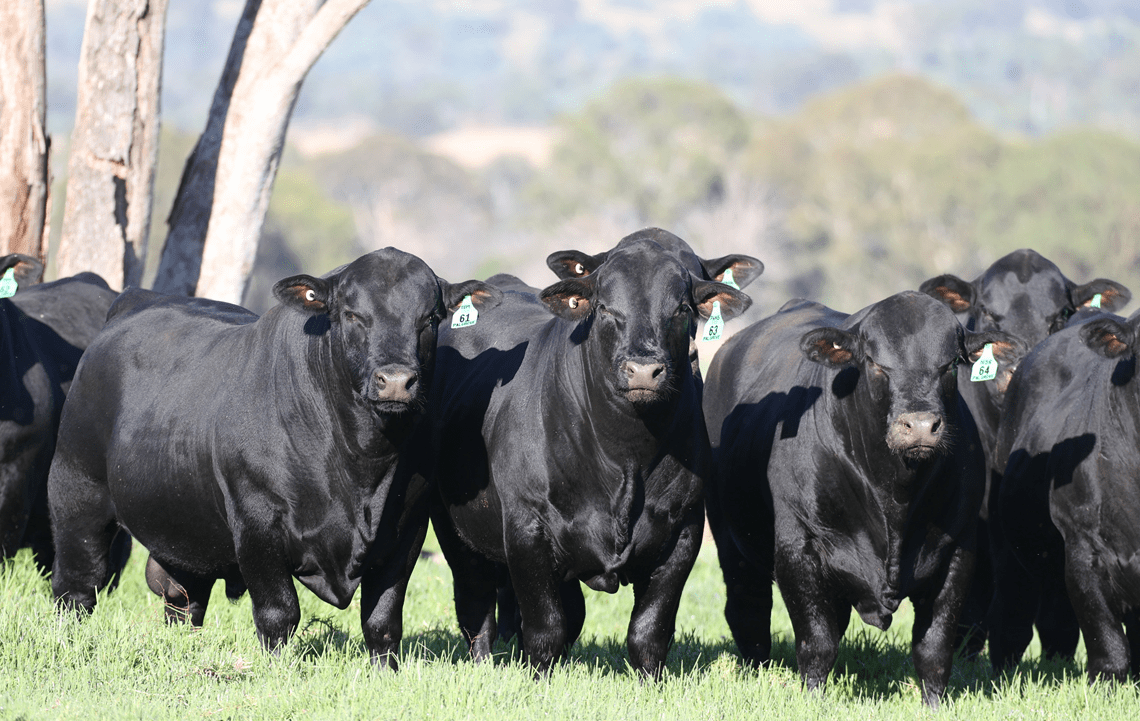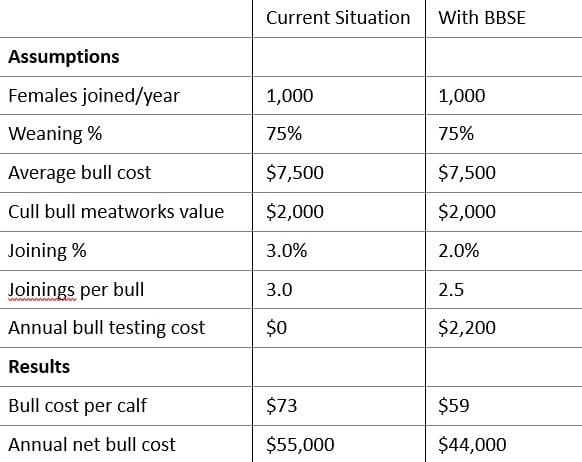
 In this contributed item, agribusiness consultant Ian McLean from Bush Agribusiness crunches some numbers on the benefit:cost of Bull Breeding Soundness Evaluation BBSE testing
In this contributed item, agribusiness consultant Ian McLean from Bush Agribusiness crunches some numbers on the benefit:cost of Bull Breeding Soundness Evaluation BBSE testing
EARLIER this year, I was asked to speak at the Australian Cattle Veterinarian’s conference on the Business End of Beef Production.
The conference was a great opportunity to learn more about some of the challenges vets are currently facing and the new innovations occurring in the sector.
I discussed industry performance, some of the challenges affecting industry performance and what separate the top performers. I also discussed the areas where I thought cattle vets can add the most value to beef businesses.
This included optimising herd productivity through effectively targeting herd expenditure, particularly investments in animal health, welfare, genetics and supplementation.
Ensuring expenditure in these areas returns more than the investment is a critical aspect of profitable beef production, and an area where good vets can add value. Reducing risk through disease management and bull testing is another aspect of management where good input from vets can be of significant value to the business.
I ran through a scenario (see table below) to demonstrate the value of bull testing to a business, which I thought may would be worth sharing with Beef Central readers as we approach bull buying season.
The scenario was a breeding business joining 1000 females each year, they were currently joining at 3pc bulls and were considering reducing to 2pc and having a Veterinary Bull Breeding Soundness Evaluation (BBSE) conducted annually to give them the confidence to so.

The assumptions and results for the two scenarios (don’t test bulls and join at 3pc versus test bulls and join at 2pc) are detailed in below table.
This is a quick and simple set of sums and some of the assumptions are debatable.
I’ve assumed the bull cost and weaning rate is the same in both scenarios. I’ve also assumed we get less joinings per bull when we test as we’ll be culling any that fail.
In reality, this could be countered by less fighting and less disease through reduced bull numbers, as well as the fact that bulls whose semen tests well, usually continue to test well (and those that don’t, don’t).
I’ve assumed the bull testing cost is $100 per head (actual cost will depend on how many you have and how much travel there is). I’ve assumed 22 bulls are tested, with 10pc culled leaving 20 for use, whereas all new bulls coming into the herd should already be tested, so less would need testing.
I’ve also not accounted for the sales proceeds from excess bulls at the start of the process.
The herd may be able to use less than 2pc bulls (see below), this was just used for the purpose of the exercise. The testing scenario requires 8 bulls a year to be purchased compared to 10 for the current situation.
$11,000 annual saving
Based on these assumptions, which likely understate the benefit, this equates to an annual saving of $11,000 from an annual investment of $2000, a benefit:cost ratio of more than 5 times. It would be good to get that return on all of our investments.
Bull ratios
This raises the key question of how many bulls are required for commercial breeding herds.
As a rule, too many bulls are used by industry, and this is costing producers in not only extra bull costs, but also extra fighting, disease and infrastructure damage.
A large number of herds actual joining percentage through the joining period is also higher than people may think, as only the very best breeding herd managers have their herd lined up so that all females are likely to be cycling when the bulls go in.

Geoff Fordyce
Respected North Queensland animal scientist Dr Geoffry Fordyce, a bloke far more knowledgeable in this area than I, has put together a very useful summary of research that he and others have done over time.
I encourage breeding herd managers to read and understand it. Whilst online, you should also check out an excellent resource put together by John Bertram, Buying Better Bulls, which every bull buyer should have printed by their bed.
Back to the savings from having less bulls through being confident they are all working.
Producers have the option of pocketing the savings, or using the savings to buy better bulls, although the cost of a bull and his genetic merit are often not correlated.
Selecting your seedstock source is one of the most important decisions for a breeding business – it has long term implications on the herd.
To help producers evaluate potential seedstock sources, we compiled the Top Studs publication. This publication, which lists the top Australian studs by breed is now available to download at no cost from www.bushagri.com.au/topstuds.

HAVE YOUR SAY